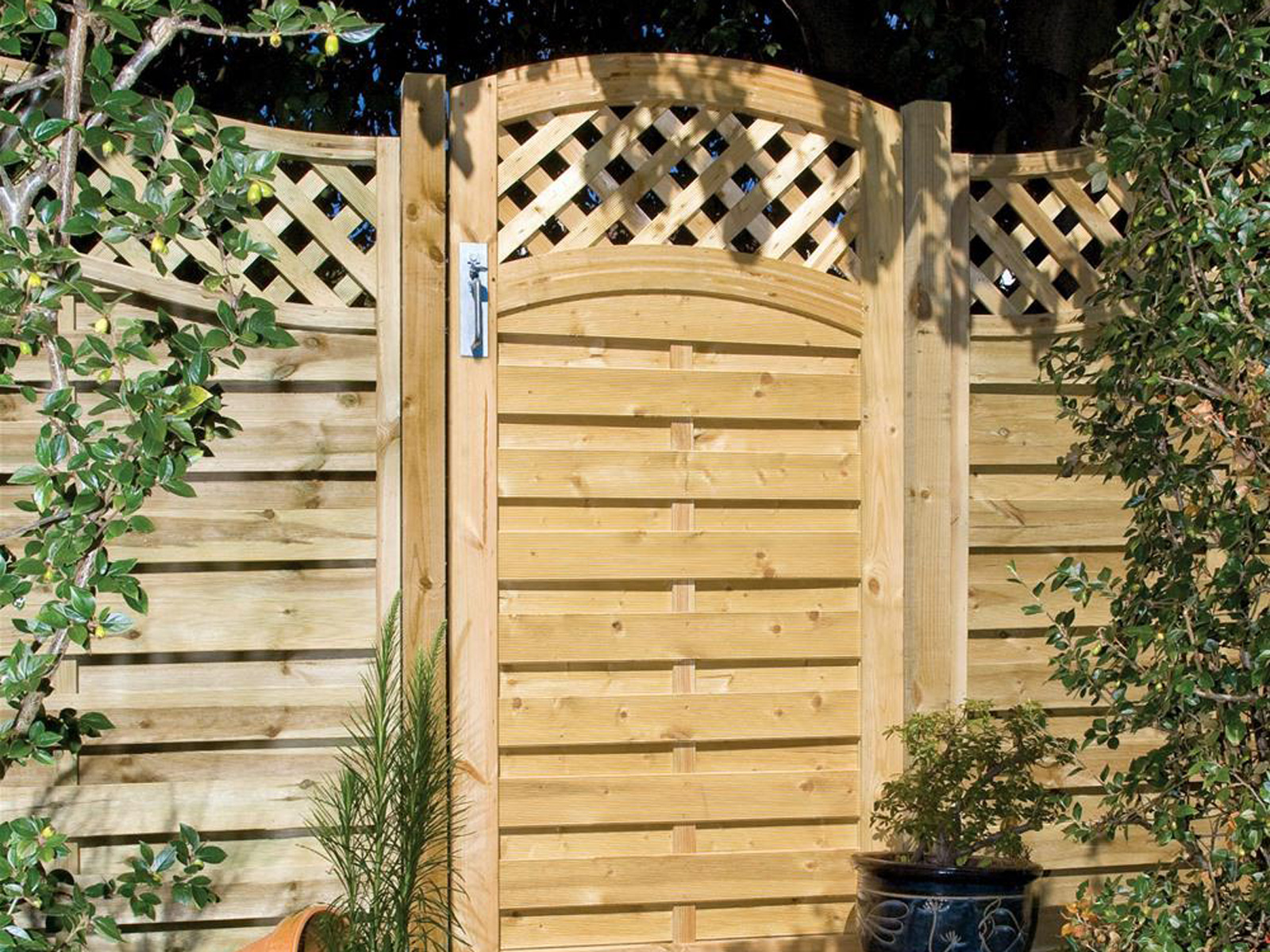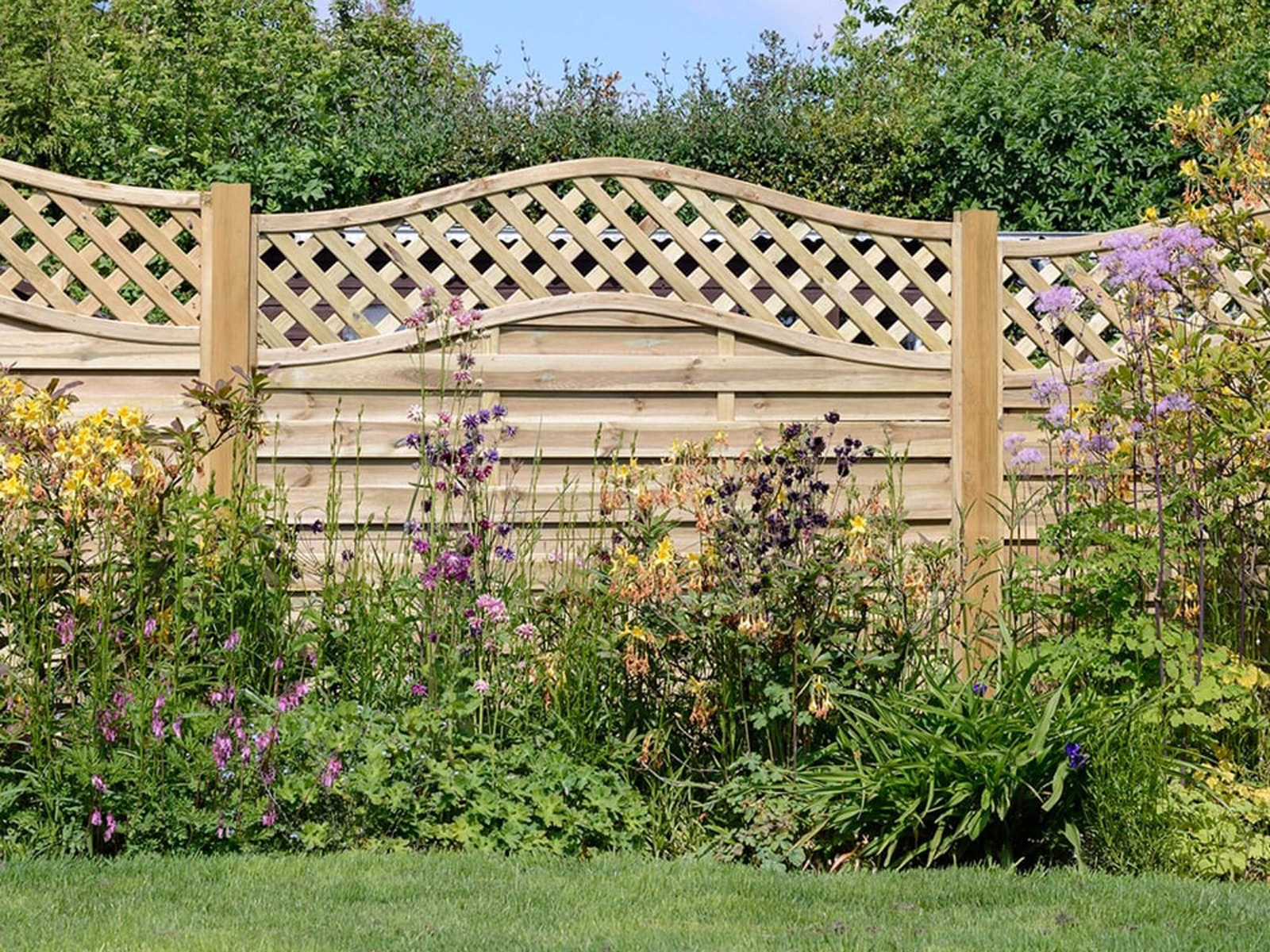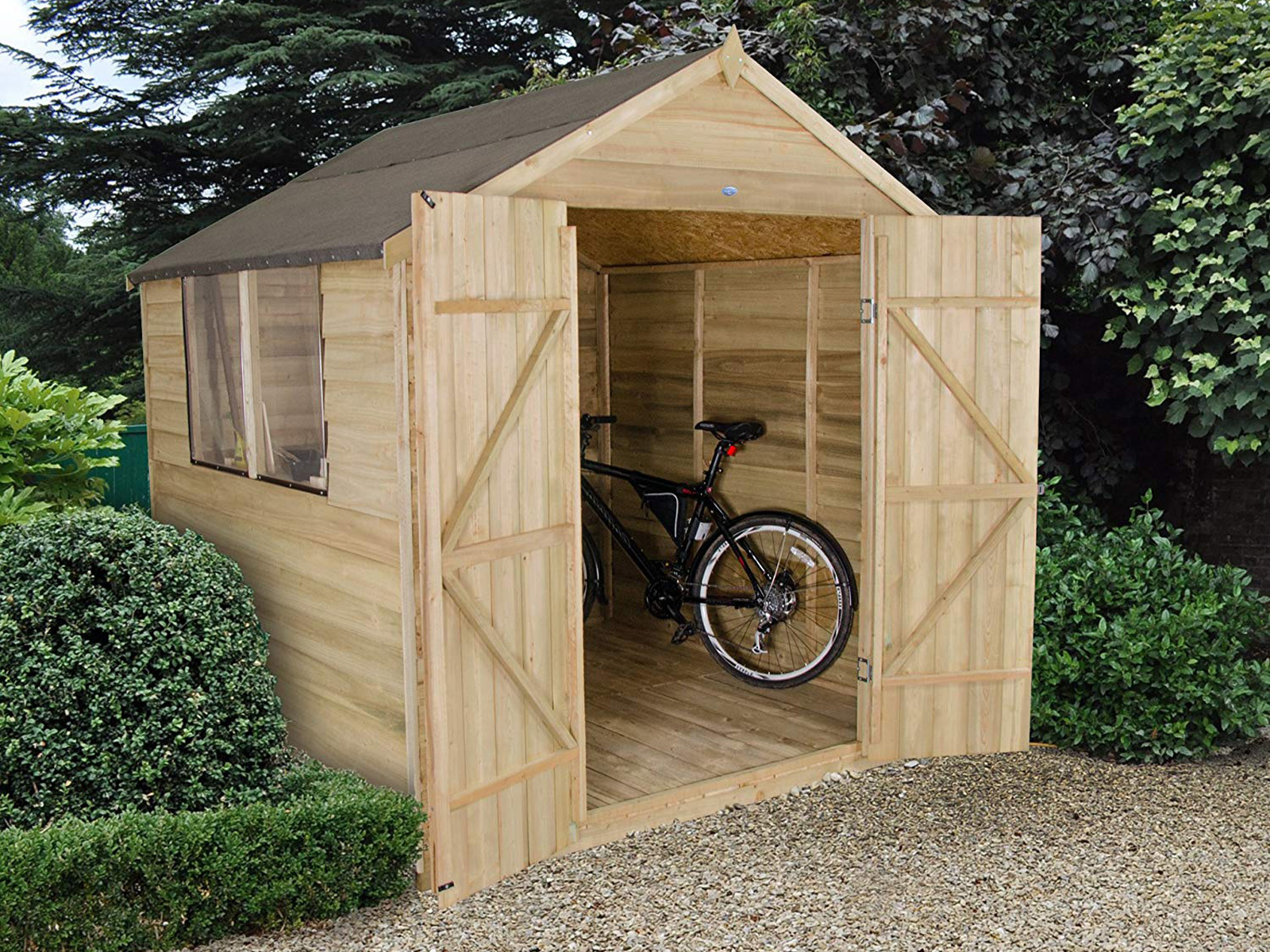Quality wooden gates, fence panels, garden furniture and garden buildings are an investment, so getting the best value for money means choosing a product that is going to have a long, low maintenance life. Wood that has been pressure treated should last a good 15 years, or more if they are well cared for.
Timber products that are pressure treated won’t rot or decay anywhere near as fast as untreated timber would. Pressure treated timber is great for garden products that are expected to remain outdoors in gardens all year round, enduring everything the weather throws at it.
What is a pressure-treated timber?
Pressure treatment is a preservative process that enhances the timber’s protection. The process includes placing the timber in a vacuum chamber, which removes all the air from the cells in the timber. Once this has been completed, the vacuum will force chemical preservatives deep into the wood. The treatment uses new chemicals that don’t harm the soil and the treatment boasts impressive results and benefits.
These include:
Protection From the Environment
Untreated wood left in moist or wet conditions is known to soften quicker, this allows fungus, bacteria and other micro-organisms to take root, slowly decomposing the wood. Even the smallest amount of moisture can cause problems, as fungus can attach itself to wood easily. The powerful preservatives used in the pressure treating process have anti-fungal and anti-insect properties that penetrate deep into the wood to protect it from environmental decay.
Longevity
Timber that has been left untreated, decays at a much faster rate than that of a timber that has been treated. The pressure treatment process creates a shield around the wood, therefore you don’t have to be worried about it being exposed to the elements and can be used outdoors all year round as it is protected from rain, hail and snow.
Cost-effective
Although compared to untreated wood, pressure treated timber is more expensive, the price is worth it due to the broad spectrum of protection it provides. The longer lifespan makes it more cost effective in the long term.
Low Maintenance
Pressure treated timber can be installed and then left for a long period, with little maintenance. As it is resistant to insects, water and fungus, there isn’t a lot that you need to worry about, therefore it is a low-maintenance option for your garden.
Environmental Friendly
Although the timber is preserved with chemicals, it still has many qualities that are beneficial to the environment. The number one reason why it’s environmentally friendly is due to its longevity. The increased lifespan of the pressure treated wood means that fewer trees need to be harvested to produce replacement products. In addition, copper (reclaimed as a by-product of the recycling industry) is used in the treatment process, reusing an element that would otherwise be discharged into the environment.
Decorative
Pressure treated timber doesn't need to be coated with layer upon layer of paint or preservatives, allowing the natural beauty of the wood to be clearly seen. The natural look is an attractive feature for many homeowners and a reason why wooden products are a favourite for many gardens. If however you prefer a more colourful display, you can easily paint or stain the timber once it has weathered, allowing you to coordinate with the colour scheme of your garden, safe in the knowledge the timber's protective layer is more than just skin deep.

What does pressure-treated timber look like?
After your timber has been freshly pressure-treated it will have a greenish tint and little green dots that can be mistaken for mould, however, it is actually residue from the pressure treatment process. The colour of the wood will change as it weathers, usually fading to a silvery-grey colour that gives the wood a mature, aged appearance.
How does timber react to weather?
Exposure to heat, as well as other changes in the environment, can prompt certain reactions, such as swelling, warping and cracking.
Cracking is particularly common during the summer months, as the heat reduces the moisture content within the wood and the fibres become tighter. Many people assume that because the wood is cracked, it is damaged – this is not the case and the wood will naturally swell again and start capturing the moisture once the months turn cooler.
How long should I wait to stain or paint my pressure-treated timber?
This is a common question when it comes to this type of timber. When you purchase a pressure treated timber product, you have to allow time for the wood to dry before you apply a stain or decide to paint it. This should be 2 months or more, allowing enough time for the timber to dry thoroughly. It is recommended you check this with a moisture meter to ensure you pick the optimum time to apply it.
What is wood warping?
Wood warping is known to be an irregularity in the wood, which occurs when the moisture content in the timber changes unevenly. This might be when one part of the wooden board dries faster than another, causing it to warp slightly.
Factors that may influence the change in moisture content include:
- The size of the piece of wood – thicker pieces can take longer to lose or absorb moisture
- The coating – depending on the coating of the timber, this may affect the moisture content
- The air temperature – the temperature can impact the moisture content and the rate of change.

How do you prevent wood warping?
A range of different factors can cause warping and some may be more difficult to control than others. However, these are the elements that reduce the chance of your timber warping that can be done by the manufacturers.
- Grain patterns and the way in which you saw your timber (if you do so yourself). For example, wood that is cut from the heart of the tree is found to be more stable against shrinking and warping.
- Store your wood appropriately – if you are not using your pressure-treated timber product, you need to store it correctly so that it doesn’t warp. To do so, you have to allow proper ventilation and ensure it is in a clean, shaded and flat space to prevent it from bending.
- Monitor the moisture content - when creating timber products manufacturers will be closely monitoring the humidity of the woods moisture content. Moisture metres can be used to accurately measure this.
Ongoing Care and Maintenance
With a good quality pressure-treated timber – you shouldn’t have to do too much maintenance; in fact, it might be better if you don’t. The pressure treated timber process gives products a protection against the environment, including weathering, insects or rot, therefore your timber requires no maintenance to keep it looking its best all year round.
If you did want to add a little extra protection as the product ages and the timber matures, use a preservative that is compatible with pressure treated timber, such as Protek, Cuprinol or Sadalin. Always check the label on the tin of preservative to ensure it is compatible, as using the wrong product can damage the timber. You can also paint the timber, but you must ensure the timber is completely dry before application.
Garden Oasis have a range of pressure treated garden products available, including wooden gates, fence panel and garden furniture, and sheds all treated to ensure longevity and protection from the elements.
 Then select "Add to Home Screen"
Then select "Add to Home Screen"